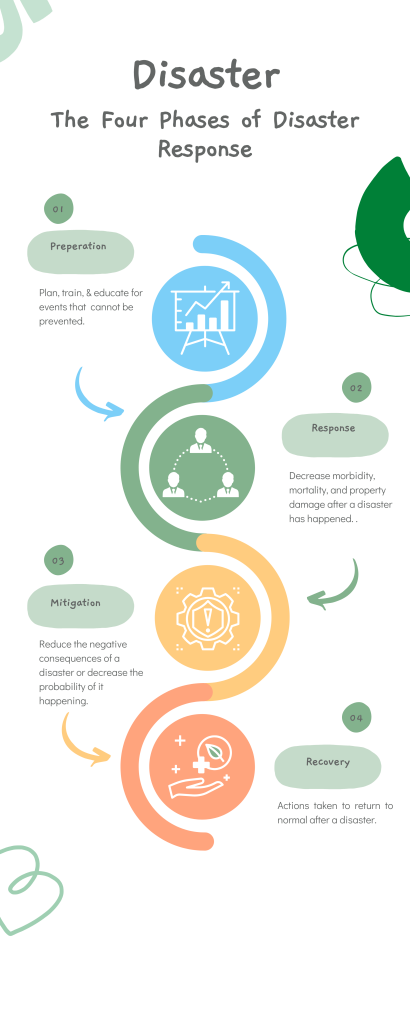Home » Disaster Management
Disaster Management
The globe is plagued with disasters, some of which are terrible and others that are controllable. Natural calamities, for example, are sudden occurrences that wreak significant devastation to lives and property. Disasters can occur either naturally or are man-made. To repair the damage caused by these disasters, emergency management is required. Through a disaster management procedure, the damage is contained and the hazards of the event are controlled. The procedure is aimed at averting disasters and reducing the effects of those that are unavoidable. Floods, droughts, heatwaves, and earthquakes are all threats to Sindh. The Sindh government’s disaster management measures have vastly improved over time.
THE PROCESS OF DISASTER MANAGEMENT:
The disaster management process is split into four stages.
Mitigation involves reducing the likelihood of a disaster or its negative consequences. Public education on the nature of the calamity and how people may prepare to protect themselves, as well as structural construction projects, are among the actions. These projects are intended at reducing the number of people killed and property destroyed in the event of a disaster.
Preparedness is the phase of disaster management that aims to improve government-led preparedness to deal with emergencies. The majority of the preparations are aimed toward life-saving activities. Plan writing, communication system development, public education, and drills are all part of the preparation process.
Response is where the disaster management team implements measures to keep people alive and limit the number of people affected in the third phase, reaction. Transport, shelter, and food are provided to the afflicted population. Repairs are being made, and temporary solutions, such as temporary housing for the impacted population, are being sought.

Recovery is the ultimate stage of disaster management. This normally happens after the tragedy has subsided and the harm has been done. During the recovery process, the team works to restore people’s livelihoods and infrastructure. Short-term or long-term recovery is possible. The goal is to return the affected population to a normal or better way of life. During public education, the importance of health safety is highlighted. The recovery phase allows catastrophe management to move forward with long-term solutions.
DISASTER MANAGEMENT CHALLENGES:
The management of disasters is a difficult task, and there are certain flaws to be found. Since the individual dangers and disasters in some countries are not well understood, the government is unable to deploy disaster management in the event of an unforeseen disaster. There’s also the issue of a country’s technical and framework capabilities being insufficient. Government support is required for disaster management frameworks. Due to the generally large population, the disaster management approach includes public education, but there is no psychological counseling for individuals. People are more likely to develop post-traumatic stress disorder and psychiatric illnesses.
For further reading: Click Here


